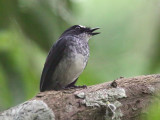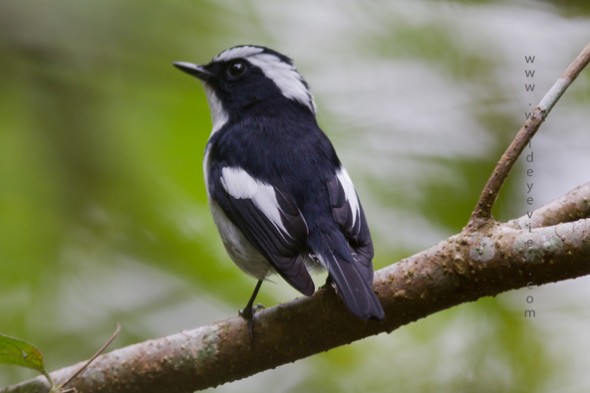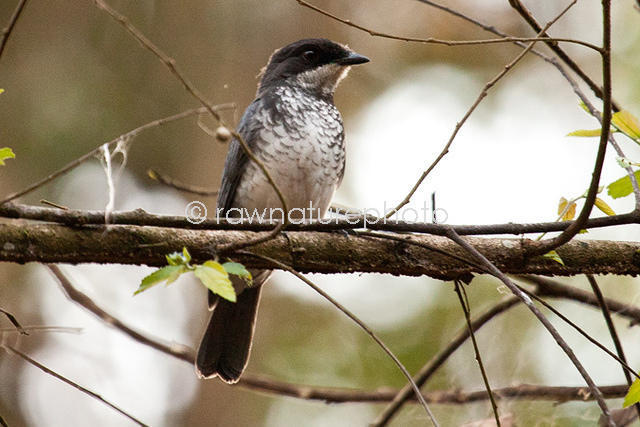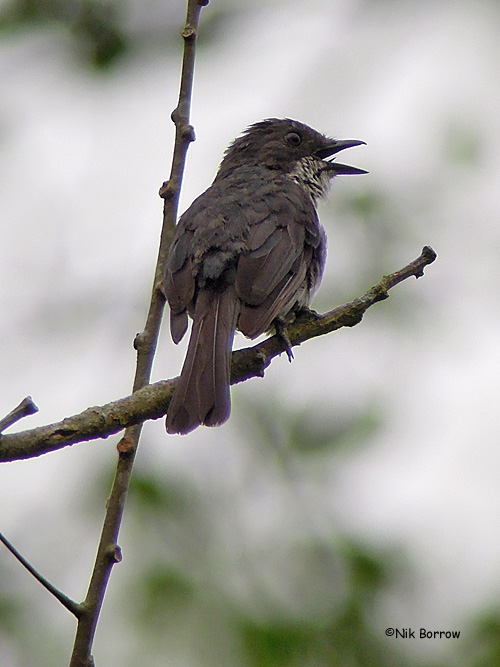
Fraseria ocreata
SUBFAMILY
Muscicapinae
TAXONOMY
Fraseria ocreata Strickland, 1844.
OTHER COMMON NAMES
English: African forest-flycatcher; French: Gobemouche forestier;
German: Waldschnдpper; Spanish: Papamoscas del Bosque.
PHYSICAL CHARACTERISTICS
The body length is about 6 in (15 cm). The sexes are colored
similarly, with upperparts dark-gray, the tail feathers black, and
the underparts white with dark, dense, scalloped markings. The
juvenile is more brown with some spotting.
DISTRIBUTION
A widespread species of tropical western and central Africa.
HABITAT
Occurs in primary and mature secondary, moist, tropical forest
from the lowlands to as high as 5,250 ft (1,600 m). Inhabits
stands with a high, thick canopy and often occurs in the vicinity
of a forest watercourse.
BEHAVIOR
A nonmigratory species. A relatively social species, which may
occur in groups of as many as 30 individuals. It may breed in a
semi-colonial manner. It also breeds as isolated, monogamous
pairs, but groups may be polygamous. Breeding pairs are often
accompanied by their young of previous years, which may help
the parents with raising their brood. The family and social
groups also react collectively to danger. The song is a melodious
series of two to seven notes.
FEEDING ECOLOGY AND DIET
Forages actively for insects, which are gleaned from foliage.
Also fly-catches for aerial prey. A noisy, active, gregarious bird
that frequently flits its tail and partially spreads its wings while
hunting.
REPRODUCTIVE BIOLOGY
Builds a bulky nest with an internal cup. The nest is built by
various members of the family group. Lays two or three eggs,
which are incubated by the female. The young are raised by
the parents plus related helpers.
CONSERVATION STATUS
Not threatened. A widespread and locally abundant species.
SIGNIFICANCE TO HUMANS
None known, except for the economic benefits of birdwatching.
Other popular Animals
Photo Gallery of - Fraser’s forest-flycatcher




 Animalia Life
Animalia Life